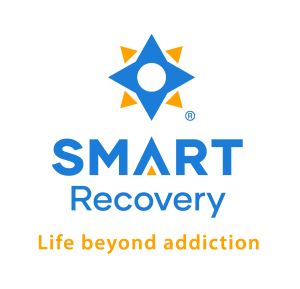 This week, leaders, volunteers and participants of SMART Recovery will gather in Washington, D.C. to celebrate the twentieth anniversary of their organization. In recent years, I have had the pleasure of interviewing current and former leaders of SMART Recovery, including Dr. Joe Gerstein, Dr. Tom Horvath, Tom Litwicki, and Richard Philips. I have also served on SMART Recovery's International Advisory Council and worked with SMART Recovery Executive Director Shari Allwood to prepare a Historical Chronology of SMART Recovery. For me, these involvements have been part of a larger project of exploring the history of the growing varieties of secular, spiritual, and religious frameworks of addiction recovery.
This week, leaders, volunteers and participants of SMART Recovery will gather in Washington, D.C. to celebrate the twentieth anniversary of their organization. In recent years, I have had the pleasure of interviewing current and former leaders of SMART Recovery, including Dr. Joe Gerstein, Dr. Tom Horvath, Tom Litwicki, and Richard Philips. I have also served on SMART Recovery's International Advisory Council and worked with SMART Recovery Executive Director Shari Allwood to prepare a Historical Chronology of SMART Recovery. For me, these involvements have been part of a larger project of exploring the history of the growing varieties of secular, spiritual, and religious frameworks of addiction recovery.
It is thus fitting to take a moment to reflect on the distinctive characteristics and historical significance of SMART Recovery and the challenges and opportunities it will likely face in the future. SMART Recovery is among the surge of secular alternatives to Alcoholics Anonymous (AA) that emerged between 1975 and 2000 that also included Women for Sobriety (WFS), Secular Organizations for Sobriety (SOS), Rational Recovery (RR), Moderation Management (MM), and LifeRing Secular Recovery (LSR). Six qualities distinguish SMART Recovery within the history of addiction recovery.
First, SMART Recovery consciously integrates experiential knowledge and scientific knowledge into its recovery guidance, with particular emphasis on the latter. As a result, its recovery support tools are open to continued evolution based on new scientific breakthroughs in the understanding of addiction recovery. SMART Recovery explicitly "supports the scientifically informed use of psychological treatments and legally prescribed psychiatric and addiction medication."
Second, SMART Recovery offers a hybrid model of professional, peer and volunteer group leaders, the latter being persons affected by or interested in addiction with neither professional training nor recovery experience. The involvement of these three groups throughout the organization positions SMART Recovery schematically between professionally-directed addiction treatment organizations and traditional member-directed recovery mutual aid societies.
Third, having recently reached the milestone of more than 1,200 face-to-face groups, SMART Recovery is now the largest and most geographically dispersed of the secular recovery mutual aid groups.
Fourth, SMART Recovery has attracted women in significant numbers--45.4% of members compared with 34% for AA, 37% for SOS, 42% for LSR, 45% for NA, 66% for MM, and 100% for WFS. (See latest SMART Recovery participant survey and White, 2009 for a summary of other membership survey data.)
Fifth, SMART Recovery has significantly improved its status among treatment professionals, with 38% of members being initially referred to SMART Recovery by either an addiction treatment program or a counselor/therapist. (The comparable number of AA members referred by a treatment program or counseling program is 39%.)?
Finally, experience within SMART Recovery challenges the proposition that secular, spiritual and religious pathways to recovery represent incompatible approaches to recovery support. Thirty-two percent of SMART Recovery participants report concurrent participation in 12-Step recovery support programs, and 10.5% report concurrent participation in a faith, religious or spiritually-based program--a pattern of co-attendance also reported in studies of other secular recovery support organization. (Click here for SMART Recovery perspective on this phenomenon of "dual citizenship").?
As SMART Recovery celebrates its twentieth anniversary, significant challenges and opportunities lie ahead.
1. Will SMART Recovery survive and thrive beyond its founding generation--a challenge faced by all recovery mutual aid groups (Only two founding members remain on the SMART Recovery board.)?
2. Will SMART Recovery's hybrid model sustain its viability or will it migrate towards a purely professional or purely member-led mutual aid organization?
3. What are the boundaries of SMART Recovery's applicability to drug dependencies other than alcohol, to so-called "process addictions," and to other problems of living?
4. Will SMART Recovery move beyond its dominant demographic (white, middle-aged, educated, and affluent adult men and women) to achieve greater diversification, e.g., increased representation of youth and young adults, increased cultural diversification via race and ethnicity, and greater educational, occupational and social class diversification?
5. Will a vanguard of SMART Recovery members become visible voices within the new recovery advocacy movement, standing in unity with others as "people in recovery" to celebrate recovery and advocate pro-recovery social policies and programs? Will SMART Recovery exist as a viable and visible support choice within the growing network of recovery community centers, recovery residences, recovery schools, recovery ministries, and other emerging recovery support institutions?
My expectations and predictions are that SMART Recovery will meet these challenges and go on to play an increasingly important role in the future of addiction recovery. To those gathered in Washington D.C. this week, I wish each of you and SMART Recovery a successful journey into that future.